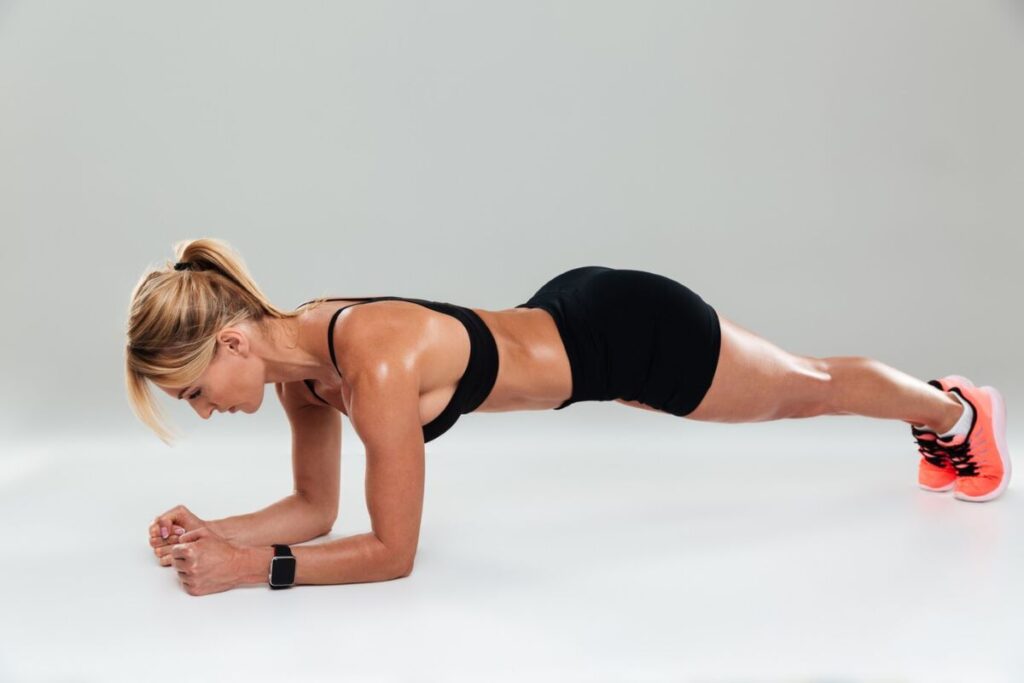Have you just had your baby? Congratulations, momma! The time that you get to spend with your newborn child is beautiful-it allows you to bond with your baby and adapt to the new reality. You must be going through a wide spectrum of feelings, whether you are a first-time mom or this baby is the new addition to your existing crew of little ones. Despite all the magic of new beginnings , this time might be extremely overwhelming while trying to organize the sleep schedule, take care of the family, and still physically recover from childbirth. During this precious but challenging time, it is important not to forget about yourself. Your baby is the priority, no doubt; however, your health and well-being are crucial for your child’s stability. It is important to move your body, and I’m not talking about rocking the baby to sleep. Exercising is quite possible despite your busy mom schedule; and you know what? You’ve got the most adorable workout buddy.
Consider your limitations.
When returning to sports and starting a workout routine, consult with your doctor about any specific limitations based on your individual recovery process. The way you delivered a baby also plays a crucial role in your physical activity planning. After a vaginal (natural) delivery, typically you must wait 6-8 weeks before starting high-effort workouts; but if you had a Caesarean delivery (C -section), you should wait 8-12 weeks before you go back to fitness. High-effort activities include running, jogging, jumping, and weightlifting. This time varies based on different conditions. Every woman is unique and takes different periods of time to recover after childbirth. Moreover, listen to your body-it will tell you whether it is ready or not to hit the mat.
Muscle groups to focus on.
For successful postpartum recovery, you must make sure to train your pelvic floor muscles, which are usually stretched or weakened during pregnancy and childbirth. If you are faced with diastasis recti (abdominal separation), training your deep core muscles will significantly improve its condition. It is also essential to rebuild your total-body strength, so choose exercises that will be beneficial for your overall physical health.
Here are some beneficial exercises that will help you gain physical strength back while connecting with your baby:
Baby Weight Squats
This is one of the most effective exercises for lower back strength (much needed for constantly carrying your baby around). Hold your child in your arms, close to your chest (you might use a baby carrier to make exercising easier for you and safer for the baby), and stand with good posture. Holding your little one adds weight to your front, making this exercise more effective and beneficial. Be very careful and keep the baby’s head well supported, especially if they’re younger than three months. Stand with your feet just wider than hip-width apart. Lower into the squat by pushing hips back and down, pretending you are sitting in a chair, but do not go too low as it will put too much unnecessary pressure on your knees. Engage your core and pelvic floor. Take a deep breath in, and exhale as you start to lower into the squat. Return to standing position with good posture.
Push-ups.
This exercise can be as fun as playing peek-a-boo, so why not have a good time while working out? Put your baby on a mat and get into a push-up position. Face your baby while they’re lying underneath you. Inhale at the top and exhale as you lower your chest, slowly getting closer to your baby. Keep elbows angled about 45° from your sides. As you get close enough to your baby, kiss them on the cheek. If you feel strong enough, close your eyes with one hand while completing the push-up with the other hand, then reveal your eyes with a peek-a-boo as you get close to your baby. I am sure this fun and engaging exercise will make both of you laugh.
Kegels.
Kegels is the most important postpartum exercise – do not ignore it! It helps you regain control over leaks that happen when your bladder muscles weaken after natural childbirth. You can perform this activity while nursing, and the goal is to contract and relax the muscles. Make sure your bladder is empty. Tighten your pelvic floor muscles and hold for up to five seconds. Relax the muscles and repeat the contraction in five seconds again. Complete 10-15 repetitions for the most effective results.
Walking.
Move your body by walking together with your baby. Get outside and catch the fresh air – it will be beneficial for both of you. Leave the stroller at home and use the baby carrier. Go to the park and walk uphill and downhill. Visit the mall and go up the stairs. Incline walking is a low-impact exercise that is great for your joints. It helps to improve cardiovascular health and core strength (but only if you engage your core muscles while walking). How to engage them? Keep your posture straight and pull your core towards your spine while walking. Make sure your little workout partner has fun by showing them around- remember, they are new to this world!
Have fun and do not forget to hydrate, as post-workout dehydration might affect your breastmilk supply.
Viktoriia Kolomiiets | Writer













